
Best And Worst Foods For Your Skin
The 6 best foods that improve your skin—and the 3 you should probably avoid.
There's no question that what you eat can have a massive impact on your physique, from the amount of muscle you can pack on to the expansion of your waistline. But while you're at the supermarket, why not choose foods that serve double duty—that in addition to improving your physique, also enhance that gorgeous face of yours by turning around tired-looking skin.
From exposure to the sun, to environmental pollution, to sweating up a storm, to the wind chill of the impending winter gloom, your skin takes a beating on a daily basis. That's why, if you want to look your best, it's wise to take heed of science showing that what you nosh on can have a significant effect on your skin health. And, really, who doesn't want great-looking skin in addition to a buff body?
For a glance-stealing complexion and improved overall skin health, be sure to include these six foods and beverages on your daily menu. Think of it as an edible fountain of youth.
Butternut Squash
If you want to squash bad skin, be sure to make this veggie a staple of your fall and winter diet. British researchers found that an increased intake of carotenoid-containing fruits and vegetables such as butternut squash can have a beneficial impact on skin appearance and perceived attractiveness.1
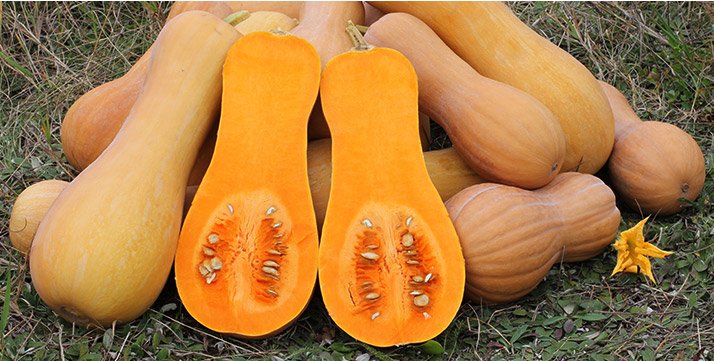
Carotenoids are powerful antioxidants that may work to improve skin tone by reducing skin-cell damage. In fact, the scientists surmise that this signal of good health helped our ancestors find the fittest mates, and today we are still drawn to someone with luminous skin tone.
Other carotenoid sources: kale, sweet potato, tomato, cantaloupe, watermelon, carrots, acorn squash
Make this: Combine 1 cup milk, 1 scoop protein powder, 1 cup cooked butternut squash, 1 small chopped frozen banana, 2 teaspoons almond butter, 1/4 teaspoon cinnamon, and 1/2 teaspoon vanilla extract in a blender and blend until smooth. Chug this smoothie after a workout to build muscle and look great.
Brazil Nuts
This giant of the nut world is a leading source of selenium. In an investigation performed by scientists in Australia, higher blood levels of selenium were associated with a 60 percent decrease in incidence of skin cancer.2
It's believed that this mineral acts like an antioxidant in the body, where it works to protect against skin damage resulting from exposure to the ultraviolet radiation emitted from the sun.
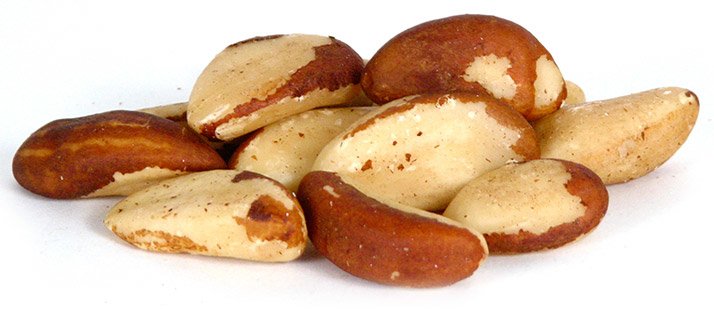
Other selenium sources: pork, turkey, beef, chicken, fish, sunflower seeds, wheat germ
Make this: Blend together 1/4 cup olive oil, 1/3 cup brazil nuts, 1/2 cup cilantro, 1/3 cup grated parmesan cheese, juice of 1/2 lemon, 1 chopped garlic clove, and a couple pinches salt. Use this pesto as a sandwich spread, stirred into pasta dishes, or as a garnish on pureed soups.
Flaxseed Oil
Scales belong on reptiles—not you—so consider adding this bastion of the health-food movement into your dietary regimen. An investigation in the British Journal of Nutrition determined that daily flaxseed oil consumption can reduce skin reddening as well as improve skin hydration, which limits roughness and dryness.3
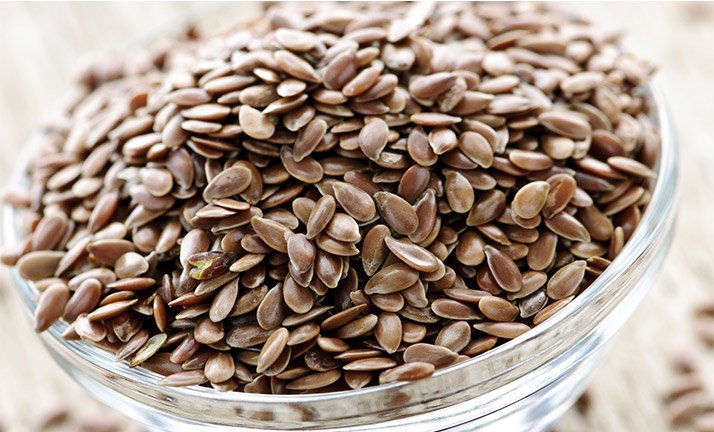
Flax is abundant in the omega-3 fatty acid alpha-linolenic acid, which may help retain skin moisture, an especially important perk during the winter months when your skin may flake more than aquarium fish food.
Other alpha-linolenic acid sources: walnuts, hemp seeds and hemp oil, chia seeds
Make this: For a skin-friendly snack, stir together plain Greek yogurt with vanilla extract and grated orange zest. Top with chopped nuts, fresh berries, and a drizzle of flaxseed oil.
Kiwi
When it comes to vitamin C, orange is not the top pick in the produce aisle. A single kiwi provides more than the daily requirement for this nutrient. That makes the fuzzy skinned fruit your epidermis's best bud.
A report in the American Journal of Clinical Nutrition showed that higher intakes of vitamin C were associated with better skin-aging appearance.4 Vitamin C's role in the synthesis of the structural protein collagen makes it a potent ally in the pursuit of a fetching complexion.
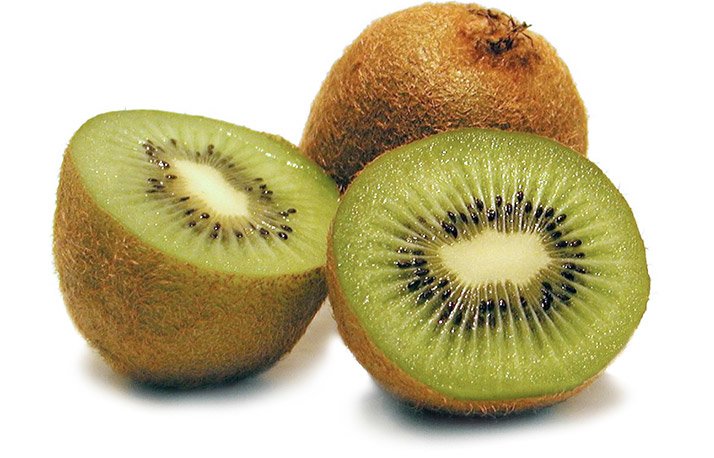
Other vitamin C sources: bell peppers, grapefruit, strawberries, broccoli, peaches, papaya, Brussels sprouts, kale
Make this: Combine chopped kiwi, chopped red bell pepper, sliced cherry tomatoes, minced jalapeno, sliced scallion, and chopped cilantro. Use as a salsa for chicken and fish.
Coffee
Your pre-workout java habit could be keeping your skin healthy if you spend time basking in the sunshine. A 2015 study conducted at the Yale School of Public Health determined that increased coffee consumption can confer protection against a potentially fatal form of skin cancer called melanoma.5 Compounds like polyphenols and even caffeine in coffee may aid in suppressing UV-triggered tumor growth.

Does too much caffeine give you the jitters? Research shows that antioxidant polyphenols in green tea can also serve your skin well by reducing damage caused by the sun's UV radiation as well as improving measures of skin quality such as elasticity and dryness.6
Make this: Take coffee outside of the mug and make this compote to jazz up yogurt, cottage cheese, and oatmeal. In a medium-sized saucepan, combine 1-1/4 cups brewed coffee, 20 pitted prunes or dried plums, 2 tablespoons honey, 1 whole star anise, grated zest of 1 orange, and 1/2 teaspoon cinnamon.
Bring to a boil, reduce heat to low, and simmer covered for 15 minutes. With a slotted spoon, remove plums and star anise from the pan. Reserve plums and discard star anise. Simmer liquid, uncovered, over medium-high heat until reduced and syrupy, about 5-7 minutes. Return plums to pan along with 1 teaspoon vanilla extract. Remove from heat and let cool.
Salmon
This staple of the seafood counter is a reliable source of long-chain omega-3 fatty acids. These help combat inflammation in the body, therefore aiding in the battle against the aging process that contributes to a harsher skin appearance.
The mega-healthy omega-3s are also an important element of cell membrane health, allowing cells to hold more moisture that results in softer skin and less blotchiness. In addition, the catch of the day also contains vitamin D, which may bolster the production of compounds that protect against skin infections.7

Other long-chain omega-3 sources: mackerel, sardines, sablefish, trout, herring, grass-fed beef
Make this: Take a dip into healthy, skin-protecting snacking by placing 3/4 pound smoked salmon, 1/2 cup plain yogurt, 1/2 cup reduced-fat sour cream, juice of 1/2 lemon, 2 tablespoons fresh dill, 1 tablespoon prepared horseradish, 2 teaspoons capers, and 1/4 teaspoon black pepper in a food processor and blend until smooth. Serve dip topped with chopped chives.
Scary Fare for Your Skin
When it comes to your skin's health and appearance, here are three foods you'll want to limit.
Chocolate
Embracing your inner Willy Wonka too often may indeed lead to angry skin. Dutch researchers determined that chocolate consumption can lead to the release of compounds that effect the immune system in a way that can result in acne.8
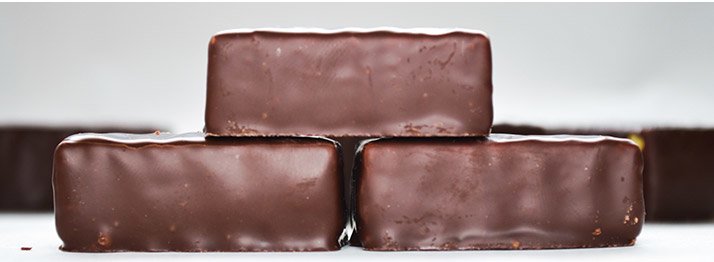
The impact is likely more pronounced with high intakes of chocolate that contain a greater percentage of sugar over cacao. So to keep your skin as smooth as a baby's bottom, be sure to enjoy chocolate in moderation, and opt for dark varieties with a higher percentage of cacao.
White Bread
A recent study published in the Journal of the Academy of Nutrition and Dietetics found a link between pimple flare-ups and the intake of high-glycemic-index foods like white bread, white rice, and sugar-laden drinks and snacks.9
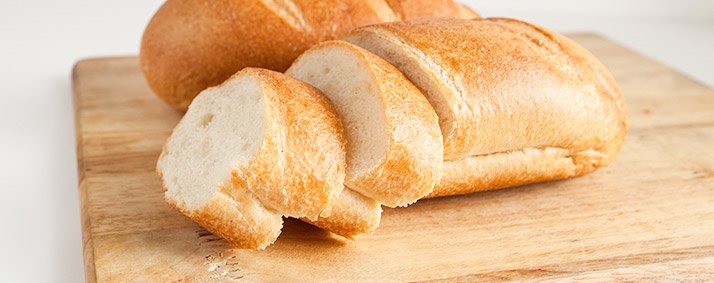
A diet loaded with these items can cause a spike in blood sugar and insulin, which may influence hormones that stimulate oil production, and in turn, trigger a breakout of acne. For healthier skin, swap out the processed carbs for lower-glycemic options like brown rice, quinoa, and whole rye bread.
Milk
Lactose intolerance isn't the only troubling side effect of your love affair with dairy. While yogurt, milk, and other dairy items have plenty of health and physique benefits, they may also lead to acne in some people, according to a review of studies by George Washington University researchers.10
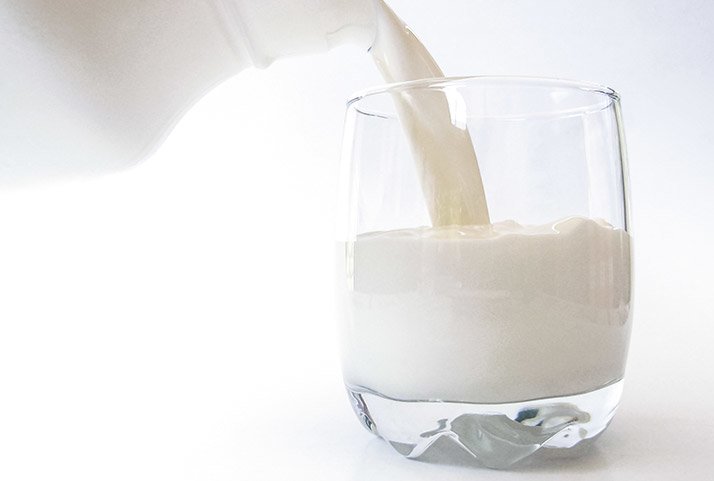
Certain hormones in dairy may stimulate the overproduction of oil in skin cells, which can lead to pimple-causing clogged pores.
References
- Whitehead, R. D., Re, D., Xiao, D., Ozakinci, G., & Perrett, D. I. (2012). You are what you eat: within-subject increases in fruit and vegetable consumption confer beneficial skin-color changes. PloS One, 7(3), e32988-e32988.
- van der Pols, J. C., Heinen, M. M., Hughes, M. C., Ibiebele, T. I., Marks, G. C., & Green, A. C. (2009). Serum antioxidants and skin cancer risk: an 8-year community-based follow-up study. Cancer Epidemiology Biomarkers & Prevention, 18(4), 1167-1173.
- De Spirt, S., Stahl, W., Tronnier, H., Sies, H., Bejot, M., Maurette, J. M., & Heinrich, U. (2009). Intervention with flaxseed and borage oil supplements modulates skin condition in women. British Journal of Nutrition, 101(03), 440-445.
- Cosgrove, M. C., Franco, O. H., Granger, S. P., Murray, P. G., & Mayes, A. E. (2007). Dietary nutrient intakes and skin-aging appearance among middle-aged American women. The American Journal of Clinical Nutrition, 86(4), 1225-1231.
- Loftfield, E., Freedman, N. D., Graubard, B. I., Hollenbeck, A. R., Shebl, F. M., Mayne, S. T., & Sinha, R. (2015). Coffee drinking and cutaneous melanoma risk in the NIH-AARP diet and health study. Journal of the National Cancer Institute, 107(2), dju421.
- Heinrich, U., Moore, C. E., De Spirt, S., Tronnier, H., & Stahl, W. (2011). Green tea polyphenols provide photoprotection, increase microcirculation, and modulate skin properties of women. The Journal of Nutrition, 141(6), 1202-1208.
- Hata, T. R., Kotol, P., Jackson, M., Nguyen, M., Paik, A., Udall, D., ... & Gallo, R. L. (2008). Administration of oral vitamin D induces cathelicidin production in atopic individuals. The Journal of Allergy and Clinical Immunology, 122(4), 829.
- Netea, S. A., Janssen, S. A., Jaeger, M., Jansen, T., Jacobs, L., Miller-Tomaszewska, G., ... & Joosten, L. A. (2013). Chocolate consumption modulates cytokine production in healthy individuals. Cytokine, 62(1), 40-43.
- Burris, J., Rietkerk, W., & Woolf, K. (2013). Acne: the role of medical nutrition therapy. Journal of the Academy of Nutrition and Dietetics, 113(3), 416-430.
- Spencer, E. H., Ferdowsian, H. R., & Barnard, N. D. (2009). Diet and acne: a review of the evidence. International Journal of Dermatology, 48(4), 339-347.
